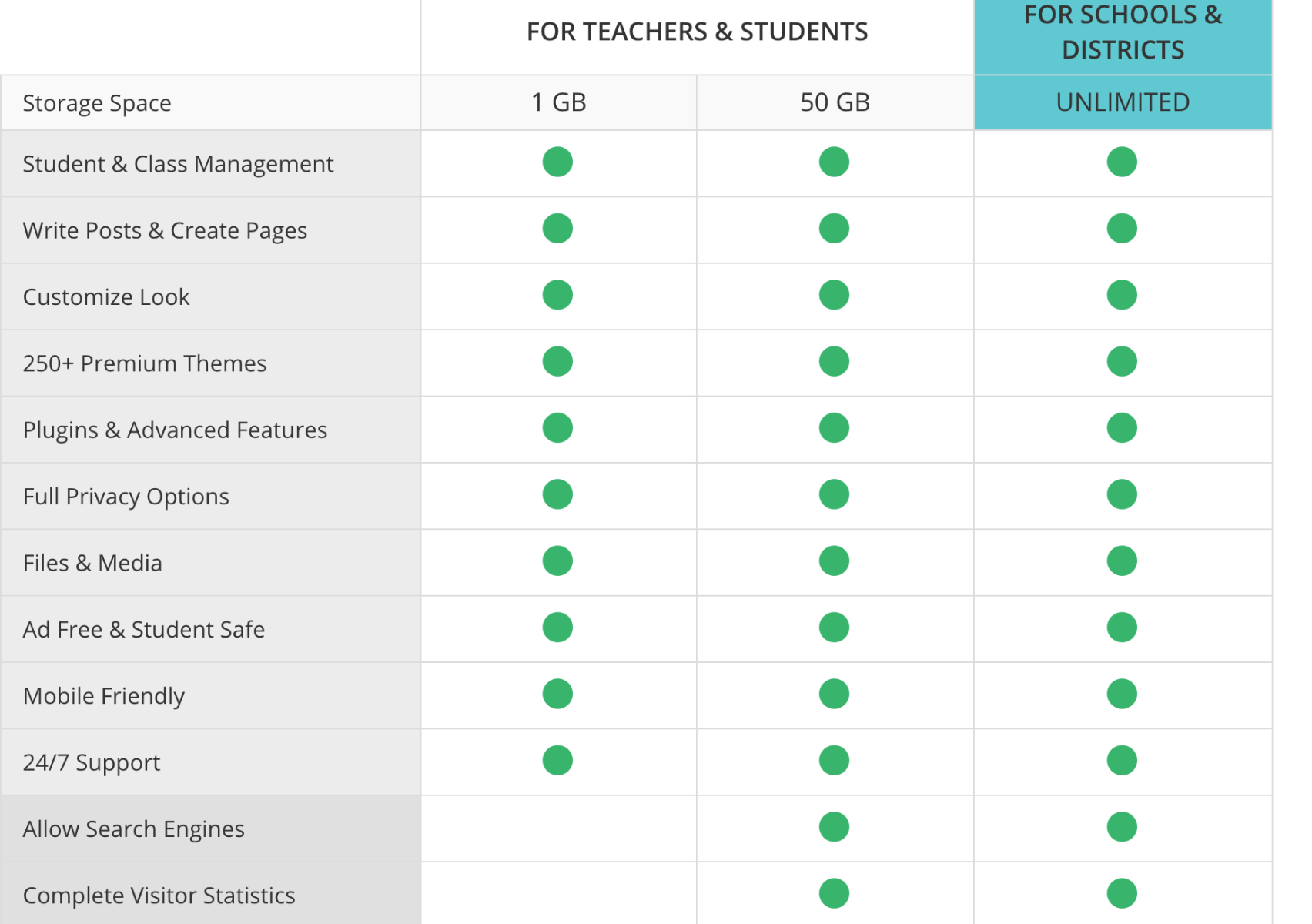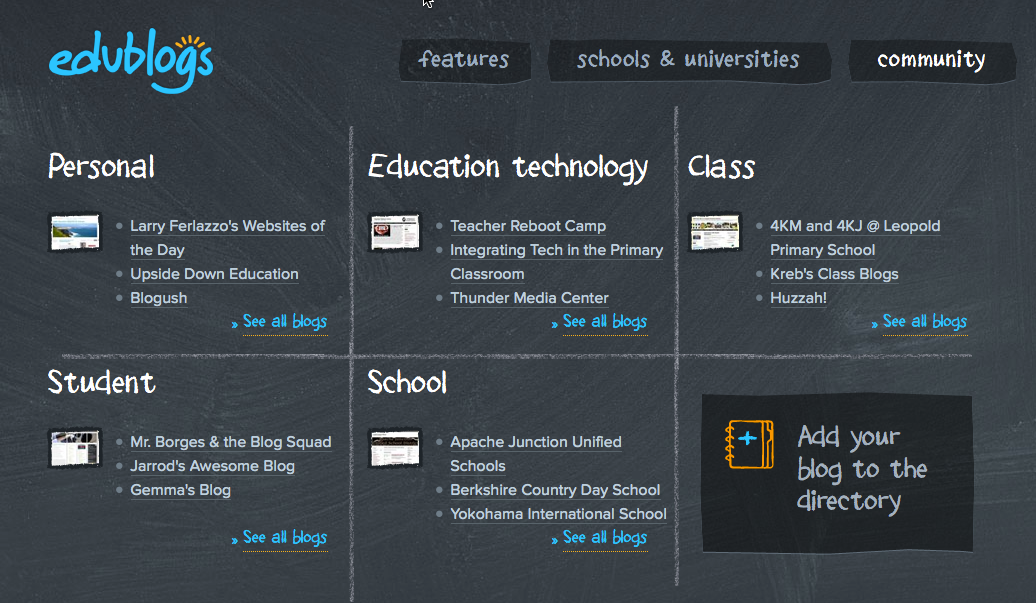Typically, we gravitate more towards EdTech tools that allow for more STEM-related student experiences, but, this week, we’re going a bit off of our normal course. In this Rising Resources post, we’re taking a look at Edublogs, an online platform students can use to practice some key real-world skills in writing, blogging, and written communication. Often thought of as more of a soft skill, communication is nonetheless extremely important in the workforce of both today and tomorrow.
It’s free to set up an Edublogs account and to use the most basic version. Known as the ‘Free’ version of Edublogs, this most basic version provides students with 1 GB of storage space, class management tools, the ability to write posts and create pages, and customize the look of their personal blog. It also includes over 250 themes to choose from, various plugins, full privacy settings, the option to incorporate different media and file types, mobile friendly use, and 24/7 support. That sounds like quite a lot, but even more is available with the other two versions!

There are two other versions—the Pro version and the CampusPress version. While the Free and Pro versions are designed more for individual teachers and students (or maybe up to an entire class), the CampusPress version is built for use throughout an entire school or district. The Pro version includes everything mentioned with the Free version except for 50 GB of storage as opposed to 1 GB, but the CampusPress version blows even that away with the offering of unlimited storage for students.
In addition, the Pro version allows for students to use search engines, access visitor statistics, enable an email subscription, and use their own custom domain. The CampusPress version includes those four features as well and also network management tools, SSO options, LTI integration, custom designs and themes, the option to batch create blogs and users, choosing a local data center, and full database exports. It’s a lot of features and that’s why the Pro and CampusPress versions come with a cost. The Pro version is $7.95 per month or $39.95 per year and anyone interested in the CampusPress version can contact the Edublogs team!
If you choose to use the free version with students, it’s worth mentioning that it will always stay free and there will be no pressure to upgrade! The Edublogs team also takes student privacy very seriously and only asks for personal information that they absolutely need—just a username for creating student accounts. Adult users who sign up also need to provide a valid email address. For students under 13 years of age, student accounts can only be created using a teacher or school-sponsored account with an invite code, making it very safe and secure!

In terms of using Edublogs as part of the academic experiences, teachers can easily view and critique student writing. They’re able to group students and monitor their progress, even offering private comments for commendation or suggestions for things to work on. There is also a large and growing education community within Edublogs, which should come as no surprise and students can always import or export the blogs they create at any time. You can even find a huge list of teacher blogs from educators who teach all different grade levels and write about all kinds of topics.
With so much turmoil surrounding the education experiences of many students, Edublogs can be very valuable as they return to school. Students will probably be feeling a variety of emotions and have gone through varying experiences while secluded from teachers and friends and getting their thoughts down (albeit in a digital format) can be a valuable outlet for them. Edublogs provides a platform for them to share their thoughts and express themselves, making it a valuable SEL tool for teachers and students.
To learn more about Edublogs and to explore the various plans for molding student content creators, visit their website. After you’ve checked out their offerings, be sure to explore our store as well and take a look at STEAM tools that can be used in remote, hybrid, and in-person learning. If you have any questions about leveraging EdTech in your particular return-to-school format, please feel free to contact us and make sure to follow us on Twitter and Instagram!



